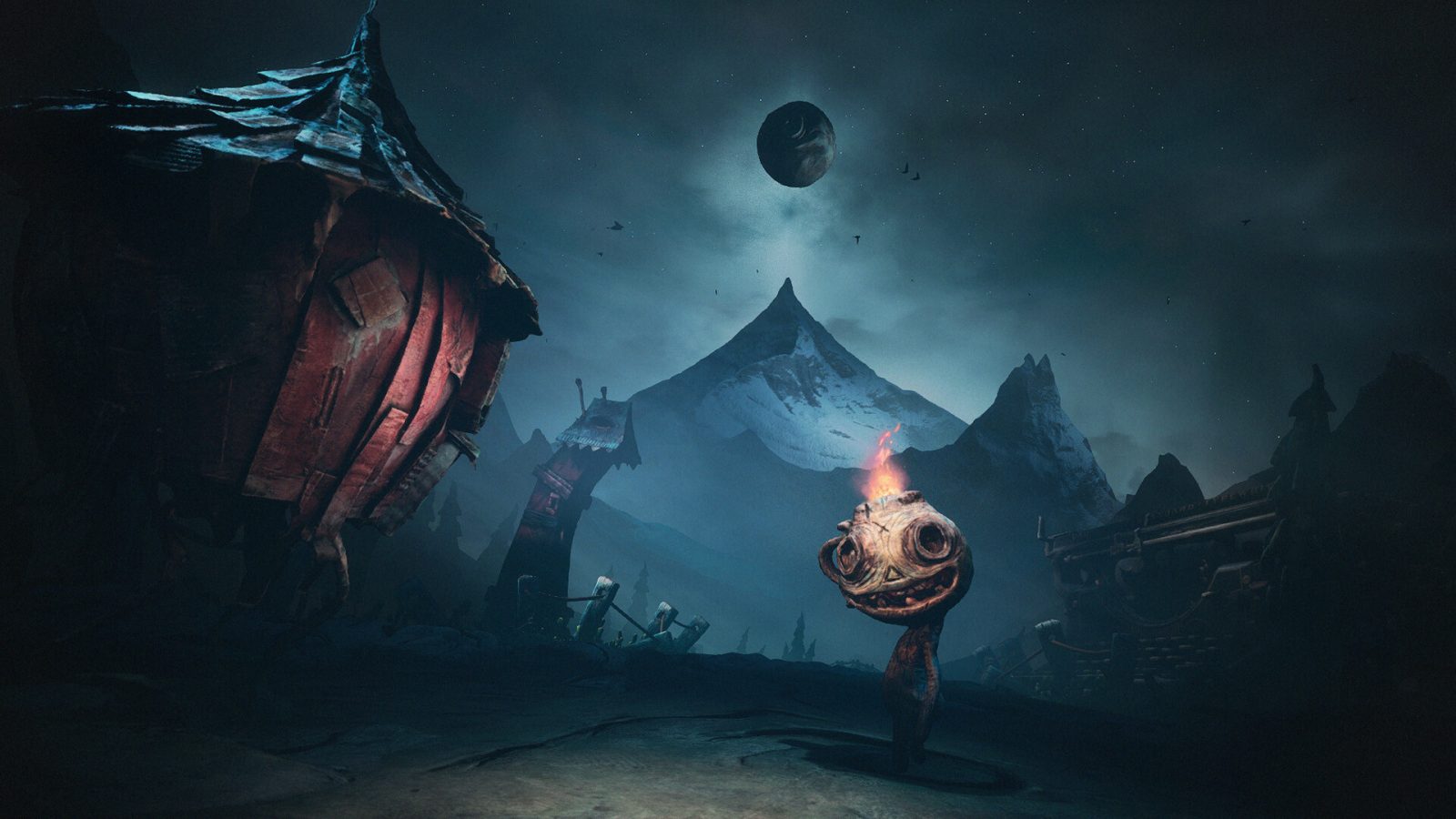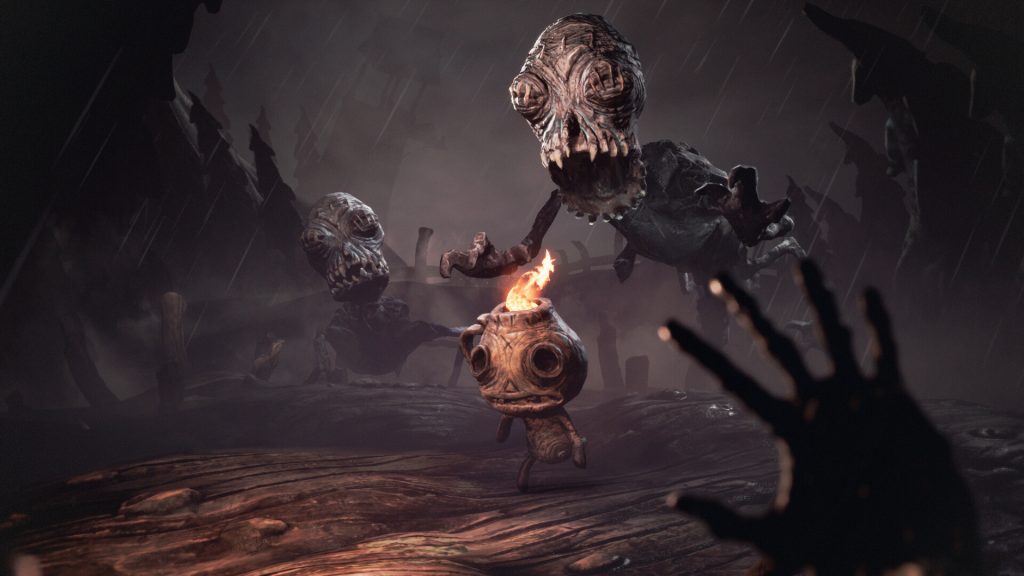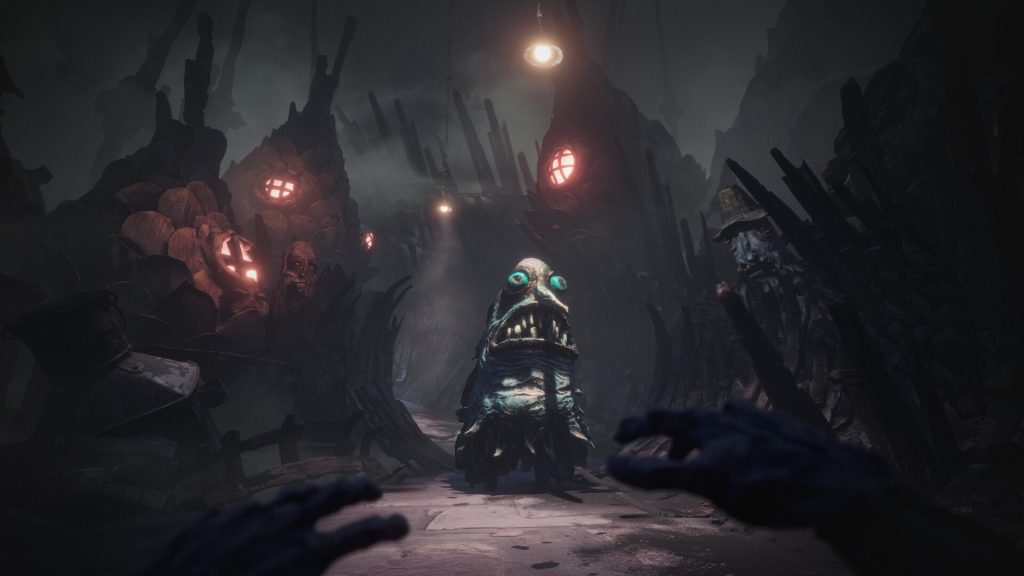The Midnight Walk review: gorgeous design and dreamlike dread

Fairytale-esque narration is strewn throughout The Midnight Walk, with lots of talk of strange histories and recondite lores inside a Halloweenish world of perpetual night. The dulcet-voiced male narrator has a mysteriously vague turn of phrase, saying a lot while saying a little. He begins speaking after the player performs an action that will occur at various points throughout the runtime: retrieving a gigantic match, the size of a large staff, from an armoire-sized box, and lighting it.
“It was told that, for the being who kept fire in their heart, all darkness would vanish,” the narrator says. “Nevertheless, this long night seemed endless, and fraught with perils.” Like the game itself, his commentary is childlike but a little spooky—a bedtime story gone bad. However, this strikingly stylised production—which innovatively features digitally scanned, hand-sculpted clay objects—doesn’t rely on words. Its tendency to tell never impedes on its ability to show.

Developer: MoonHood
Release date: May 8, 2025
Available on: PVSR2, Steam
Experienced on: PSVR2
The opening immersion associates moving with the act of seeing, positioning our character—named “The Burnt One”—inside a creepy blurry corridor where objects take on clarity only if we walk up to them. One central aspect of the gameplay literalises a metaphor: lighting a path through the darkness. This is achieved using the aforementioned matches and with the help of Potboy, our delightfully odd companion, who’s like a portable, vaguely human-shaped fire pit, with a bulbous head and a lick of flames protruding from the top of his noggin. Lighting things is required to achieve light puzzles, generally deployed to grant access to previously inaccessible spaces, for instance opening gates and activating platforms.
My initial interactions with Potboy reminded me of the cute little green goblin from Gnomes and Goblins. Both characters are natives to a magical environment we enter, who are initially shocked by our presence but quickly bond with us—and vice versa—providing an anchoring, guide-like presence in a destabilizing alien world. The core objective in The Midnight Walk—which was directed by Klaus Lyngeled and written by Olov Redmalm—is to escort Potboy to a distant place called Moon Mountain: in effect a narrative justification for a tonne of walking.
At this point, I should note that there are two versions of The Midnight Walk: one flatscreen and the other VR. I of course played the latter, and was pleasantly surprised to discover it felt like a fully-fledged virtual reality experience, not some half-baked attempt or after thought. It’s not perfect: cut scenes for instance freeze the player in place while moving the virtual camera around, reducing our immersion, though this happens in plenty of VR exclusive titles too.
Playing it on PSVR2 (as I did) allows particular gaze-activated features. Sometimes we’re required to close our eyes and listen to the sounds around us in order to locate invisible items—a fun idea, a little wanting in execution. Sometimes I shut my peepers, heard gurgling-like noises, and thought hmm, what’s next? This aspect of the game improves the further we progress, however, and incorporates eerie moments in which a hideous red-glowing monster runs at us—and the only way to get rid of it is to close your eyes.

Sprinkled throughout this world are “shellphones,” which are like large sea shells, containing audio from the past, allowing us to absorb some strange creature’s memories. It’s a nice, inessential add-on, like audio logs in sci-fi games. There’s also some stealth elements, involving various monsters we must sneak past and hide from, seeking refuge in conventionally located wardrobes.
The developers at MoonHood have described the tone as “cozy horror,” indicating an experience alignable to Tim Burton or Henry Selick animations rather than hardcore fright fests. The Midnight Walk does a fine job evoking a sense of magic and wonder—often tinged in sorrow, with a feeling that special things have been lost, fouled by time and circumstance.

Gameplay wise, the simplest occasions register the most. Moments when we walk past huge creatures, as they do the same past us, felt truly special, partly because their presence reminds us that this world extends far beyond ourselves. Small characters often take the stage for a short moments, delivering melancholic dialogue matching the state of the world, or the state of themselves, to some forlorn observation about the past. “If I had a heart, I’d feel great shame for what we did,” says one. And another: “if I could just hear that lullaby one last time, I know I’d be able to move on.”
It’s not every day you play a game that exudes this kind of pathos, and aesthetically matches it a world that feels, at all times, lovingly crafted. The character and creature designs are really striking, looking wonderfully tactile. Everything—even the fog and lighting effects—seem tinged in a gentle but profound sorrow. And yet, at the same time, The Midnight Walk is a pleasure to play. What a strange combination.

